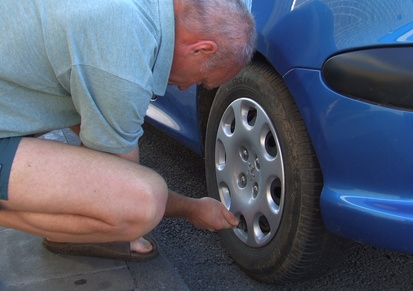
Driving with the wrong amount of air pressure in your tires can be dangerous for you and loved ones traveling with you. The wrong air pressure can cause a blow out while driving, and also increase the wear and tear on your tires. For that reason, it is best to ensure that your tires have the correct air pressure at all times. The pressure should be checked on a regular basis -- at least monthly. However, it is so important that you can check it weekly or even daily.
Determine how much air pressure is recommended for your tires. The air pressure is referred to as "PSI," or pounds per square inch. The PSI information can be found on the outer wall of the tire. It can also be determined by reading the label that is located inside the front driver's side door.
Check the amount of pressure that is currently in your tires. To do this, you need a pressure gauge. You can purchase a pressure gauge from many retail stores. Some air pumps at gas stations also have a pressure gauge attached. Be sure to check the air pressure before driving your vehicle. As you drive your vehicle, the tires heat up, which can cause a false reading of the air pressure. Therefore it is best to wait until the tires are cooled down.
Press the stem that is located on your tire's air nozzle, if you need to release air from the tire. When pressing the stem with the pressure gauge, you will see the PSI decrease. Stop letting air out when the PSI matches the recommended pressure level.
Add air to your tire if the tire pressure is too low. When adding air to the tire, it is best to add a little at a time. As you add the add, continuously use the pressure gauge to determine when your tires have the correct PSI.